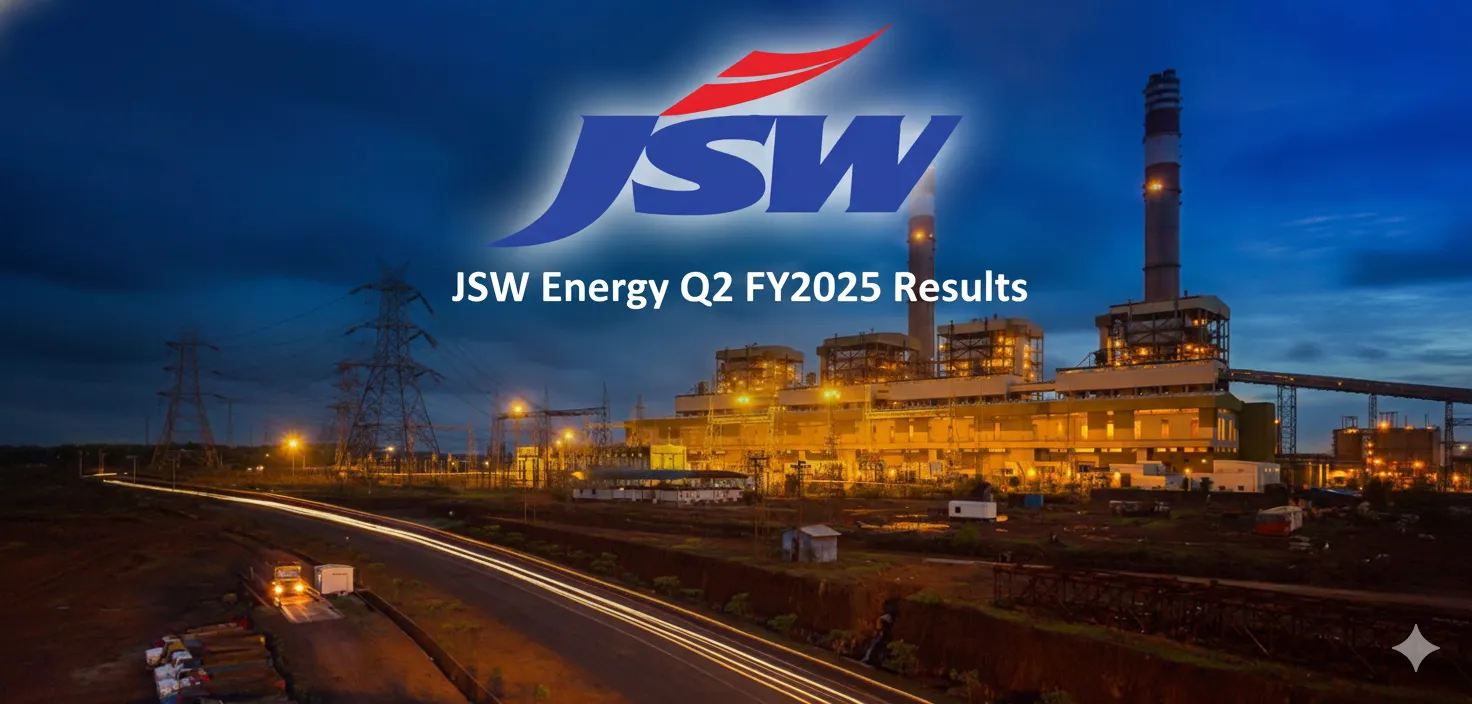JSW Energy Limited has announced its financial results for the quarter ended September 30, 2024 (Q2 FY2025), delivering a stable performance amid regulatory and tariff challenges. The company reported healthy growth in power generation, steady profitability, and consistent progress in renewable and energy storage initiatives — reinforcing its strategic shift toward a greener energy portfolio.
Key Financial Highlights
| Metric | Q2 FY25 | Q2 FY24 | YoY Growth |
|---|---|---|---|
| Revenue from Operations | ₹3,459 crore | ₹3,395 crore | +1.9% |
| EBITDA | ₹1,907 crore | ₹2,003 crore | -4.8% |
| Net Profit (PAT) | ₹853 crore | ₹850 crore | +0.3% |
| EPS (₹) | 5.18 | 5.15 | +0.6% |
JSW Energy delivered a 14% YoY increase in total generation, reaching 9.8 billion units (BUs), driven by capacity additions in wind and solid output across thermal and hydro plants.
Management Commentary
According to the company’s management, the operational momentum was supported by improved capacity utilization and timely commissioning of renewable assets. However, EBITDA margins faced pressure due to the two-part tariff revision in the hydro segment as per CERC regulations and lower spreads in merchant power sales.
JSW Energy’s leadership reiterated its commitment to achieving 20 GW of generation capacity by 2030, primarily through renewable projects and storage systems.
Segment Performance
- Renewable Energy:
- Generation rose 14% YoY to 5 BUs, led by a 37% surge in wind and a 5% increase in hydro output.
- The company secured power purchase agreements (PPAs) for 3.8 GW of renewable projects, strengthening visibility on future earnings.
- Thermal Energy:
- Output climbed 14% YoY to 4.8 BUs, supported by improved plant load factors (PLFs) and stable demand.
- Storage & Emerging Businesses:
- JSW Energy is developing a 1 GWh battery energy storage system (to be commissioned by June 2025) and a 12 GWh pumped hydro project with MSEDCL, targeted for completion by 2025.
- Its green hydrogen plant (3,800 TPA) remains on track for commissioning by March 2025, supporting a supply agreement with JSW Steel.
Market Reaction
Following the results announcement, JSW Energy’s stock traded marginally higher on the NSE, reflecting investor confidence in its consistent performance and long-term renewable strategy. Despite muted profit growth, analysts viewed the operational gains and renewable momentum positively.
Peer Comparison
Compared to peers like Tata Power, NHPC, and Torrent Power, JSW Energy’s Q2 performance stood out for strong generation growth despite a modest topline rise. While NTPC and Tata Power reported higher profit growth due to fuel mix advantages, JSW Energy’s renewable portfolio and storage pipeline position it favorably for long-term sustainability.
Future Outlook
Analysts expect earnings momentum to strengthen from H2 FY2025 as new renewable assets come online and energy storage projects advance. Management guidance suggests steady improvement in cash flows and balance sheet metrics, with net debt-to-equity at 0.9x and cash reserves of ₹5,719 crore.
Upcoming quarters are expected to benefit from capacity commissioning, long-term PPAs, and a favorable policy environment for clean energy investments.
FAQs
What was JSW Energy’s net profit in Q2 FY2025?
The company reported a consolidated net profit of ₹853 crore, up slightly from ₹850 crore in Q2 FY2024.
Did JSW Energy beat market expectations?
Yes, the results were largely in line with expectations, with stable profits and strong generation growth despite minor margin compression.
How did JSW Energy’s margins perform?
EBITDA margins declined modestly due to lower merchant power spreads and tariff adjustments in the hydro segment, though overall operational efficiency remained strong.
Conclusion
JSW Energy’s Q2 FY2025 results showcase steady financial health, rising renewable contribution, and strategic execution toward its green energy vision. Despite short-term margin pressures, the company’s diversified generation mix and pipeline of storage and hydrogen projects reinforce its position as a key player in India’s evolving power sector.
Sources: JSW Energy Investor Presentation




